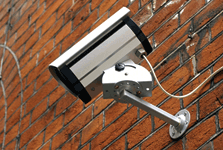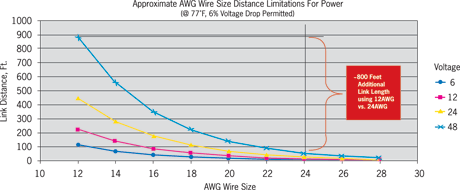Security

Optical Cable Corporation is built on a tradition of innovation and dependability for the most severe duty applications, including critical security requirements. In the early 1980s, Optical Cable Corporation was a pioneer in the design and production of special tight-buffered cables for demanding military field applications. Today, Optical Cable Corporation builds on this technology at its ISO 9001:2000 registered facility in Roanoke, Virginia, where a broad range of fiber optic cables are manufactured for high bandwidth transmission of data, video, and audio communications for today’s demanding security applications. Fiber optic cable solutions for security by Optical Cable Corporation provide a comprehensive and versatile set of products to address the security industry’s voice, data, and video cabling requirements.
Technology Trends
 Whether extremely low or very high bandwidth, the most demanding security applications are using optical fiber. Why? Fiber optic cable provides the most reliable and secure mode for transporting signals from one place to another. Fiber’s well known immunity to EMI and other interferences makes it the most reliable medium. The nature of optical fiber and light transmission make fiber optic cable naturally the most secure mode of signal transport.
Whether extremely low or very high bandwidth, the most demanding security applications are using optical fiber. Why? Fiber optic cable provides the most reliable and secure mode for transporting signals from one place to another. Fiber’s well known immunity to EMI and other interferences makes it the most reliable medium. The nature of optical fiber and light transmission make fiber optic cable naturally the most secure mode of signal transport.
Cameras and other security equipment are requiring increased bandwidth for improved resolution. Therefore, newer cameras provide built-in fiber connections via fiber interface. Older cameras are using fiber by locally installing media converters from a very large number of suppliers, connected to traditional electrical camera outputs.
Of all the alternatives, fiber optic cable is the clear choice for the transport of security signals. Media converters make concern over protocols and other technical parameters relatively easy to address. Simply insure the media converter bandwidth meets or exceeds the camera output.
What is Media Conversion?
Media converters enable network administrators to connect one type of media with other, dissimilar media – for example, coax/twisted pair to fiber optic cable. Media converters are physical layer networking devices that simply receive data signals for one media, convert and transmit them to the other media, while remaining completely transparent to other networking devices and higher protocols.

Why Media Conversion?
Distance, cost savings, and flexibility. Media conversion from copper cable to optical fiber will allow the network to extend to far greater distances. Media conversion provides flexibility by enabling seamless interoperability between legacy structured wiring systems and the latest optical switches. Media converters play an important role in today’s mixed media enterprise cabling systems by satisfying the requirements for data throughput, cabling bandwidth, distance, and security.
FIBER + |
OPTICAL CABLE CORPORATION’S EXCELLENT CABLE DESIGN |
= OPTIMUM SYSTEMS |
|
|
|
| *Not applicable for fiber optic cables containing copper | ||
Fiber Optic Security Applications
The extensive use of fiber optic cables in the telecommunications industry has provided the technological and economical platform for practical deployment in many other applications. Current industries using fiber optic cables for demanding security applications include:
 Aerospace
Aerospace- Bridges
- Nuclear Facilities
- Highways and Traffic Intersections
- Military Installations
- Public Transit Corridors
- Department of Energy
- Parks and Public Spaces
- Utility Substations
- Water Reservoirs and Distribution Pipelines
- Mining
- Water Treatment Plants
- Government
- Military/Secure Manufacturing Facilities
- Shipping and Docking Facilities
- Containerized Freight Handling Facilities
- Remote Communications Towers
- Airports (public, private, and freight)
- Auto and Storage Lots
- Prisons
- Private Estates/Palaces
- Embassies
- Sports Arenas
- Convention Centers
- Residential Surveillance and Alarms
- Small Business Intrusion and Video Surveillance
Typical Security Systems:
- CCTV Video Surveillance
- Perimeter Intrusion Monitoring and Surveillance
- Intrusion Alarm Systems
- Process Monitoring and Alarms
- Video Motion Detection Systems
- Covert Surveillance Equipment
- Facial Recognition Systems (Biometrics)
- Access Control Systems
- Traffic Surveillance
- Traffic Signaling
- Amber Alter
Cost Comparison
Optical fiber as a technology platform is tried and proven over time. Fiber optic security cable is now a more sensible choice for long-term "future-proofing" and scalability; especially with today’s trend towards converged LAN and WAN networks, IT security systems, physical premises security systems, and building/plant automation systems.
| Feature | Coaxial Cable |
CAT-5e/6 Twisted Pair |
Fiber Optical Cable |
| Cost | $$$$$ | $$$$ | $$$$$ |
| Lightning Protection | Required | Required | Not Required |
| Ground Loop Protection | Required | Required | Not Required |
| Transmission Distance | 1,000 ft. no repeaters 2,400 ft. w/repeaters |
1,000 ft. w.balun 6,000 ft. w.balun at 64k data speed |
22,140 ft. No repeaters required |
| Bandwidth | 100 MHz at 1,000 ft. | 100-250 MHz at 1,000 ft. | 500 MHz at 3,280 ft. |
| Security | Not Secure | Not Secure | Secure |
| Cross-Talk | YES | YES | NO |
| Shorts and Shock Hazard | YES | YES | NO |
| System Expansion and Upgrades | NO | NO | YES |
| Multiplexing Capabilities | Fast-Scan Technology | Real Time | Real Time |
| Future Proof | NO | NO | YES |
Fiber optic security cable is now practical and preferable due to:
- Massive telecom fiber deployments
- Manufacturing “economies of scale”
- Fiber production technique improvements
- Electronics improvements, cost reductions
- Cost to increase copper bandwidth



